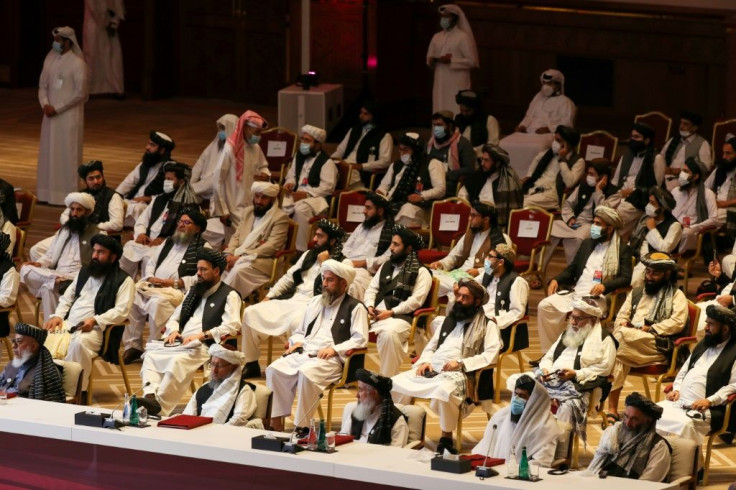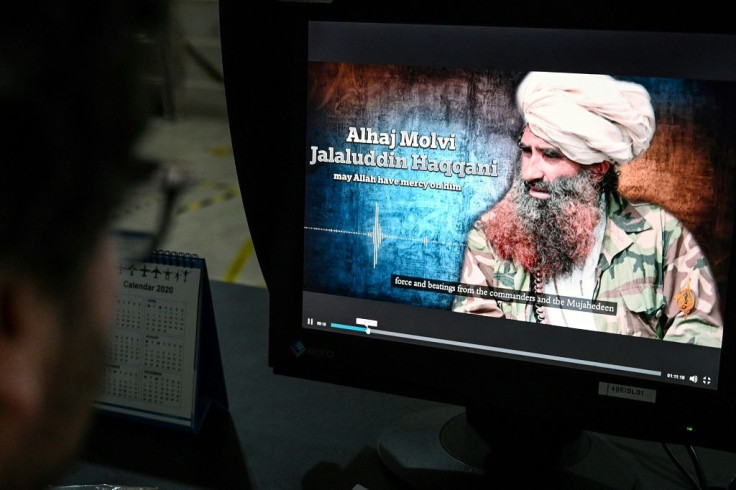Taliban Seek Image Revamp As Afghan Peace Talks Grind On
As Afghan peace talks grind on, the Taliban are trying to portray themselves as a viable government-in-waiting in an image makeover that includes rehabilitating their ultra-violent affiliate, the Haqqani network.
Negotiators from both sides in Afghanistan's 19-year-old war have been meeting in Qatar since September and are attempting to draw up a blueprint for the country after US and foreign forces leave next year.
The languid pace of talks at a luxury hotel in Doha belies the chaos on the ground in Afghanistan.
As the militants push for battlefield dominance including a major assault this month in Helmand province, the Taliban's propaganda arm is churning out a steady stream of social media messages and videos, and publishing reports on a slick website depicting themselves as good governors.

A recent article said Taliban task forces had been deployed in Kabul to protect the population against "lawlessness and corruption", a swipe at overwhelmed authorities struggling to control crime.
A video released on Facebook by the group this year showed members in surgical masks distributing hand sanitisers after the coronavirus reached Afghanistan.
And even though they frequently blow up telecom towers and government buildings, the militants are also circulating claims on WhatsApp about their infrastructure projects such as roads and irrigation canals.
Sediq Sediqqi, a spokesman for President Ashraf Ghani, highlighted the apparent contradiction.
"On one hand, they are talking about brotherhood, mercy, service, humility, and unity, and affection among the Muslims," he told AFP.

"And on the other hand, they are killing and wounding innocent civilians, including women and children."
In power from 1996-2001, the Taliban ran a brutal form of Islamist government that punished women for leaving the house, forbade entertainment and made public beatings and executions routine.
Perhaps the most dramatic part of the public relations push is around the Haqqani network, a violent Taliban wing blamed for some of the worst atrocities in Afghanistan's war.

A new documentary tracing the life of Jalaluddin Haqqani, founder of the eponymous network, depicts him as a "great reformer" who fought heroically over four decades, first against the Soviets and then against the Americans.
Designated a foreign terrorist group by the US State Department in 2012 and suspected of ties to Pakistan's secretive security apparatus, the Haqqani network has been linked to a string of attacks against foreign forces and Afghan civilians, including a 2017 truck bombing near the German embassy in Kabul that killed more than 150 people.
The film features archive footage of the bearded and turbaned Haqqani, who died in 2018, and claims he was an effective administrator in his former stronghold of Khost province, where he opened dozens of madrassas, "focused on charity" and fought corruption.
Taliban spokesman Zabihullah Mujahid said the film aimed to "introduce" Haqqani as an "icon".
"We wanted to show his way of life, his sacrifices, his speeches to our future leaders and young mujahideen," he told AFP.
The film seeks to rebrand the deadly and once semi-autonomous Haqqani network and present them as unified with the broader Taliban movement, Andrew Watkins, an analyst on Afghanistan for the Crisis Group think tank, told AFP.
The Taliban "clearly have an agenda" to show supporters and outside audiences that the two groups "are the same thing".
"They may not have been in the past but they are today. And the Taliban celebrating the Haqqani network's patriarch is a way of solidifying that," Watkins said.
In February, Sirajuddin Haqqani, one of Haqqani's sons who now heads the Haqqani network and is also deputy leader of the Taliban, penned an editorial in The New York Times.
Sirajuddin wrote that the Taliban were ready to agree to "a new, inclusive political system in which the voice of every Afghan is reflected and where no Afghan feels excluded".
The Taliban's attempt to depict themselves and the Haqqanis as efficient rulers is a far cry from early public relations efforts, when the insurgents produced videos showing suicide bombers and gloated about attacks on Western troops.
Watkins said the effort being pumped into the image revamp is directly linked to the peace talks: "They've expanded their capability and are producing on a staggering scale now."
© Copyright AFP 2024. All rights reserved.





















